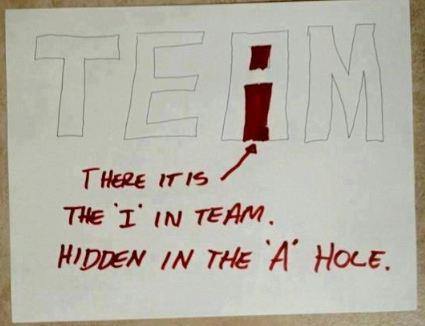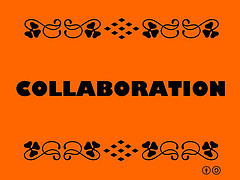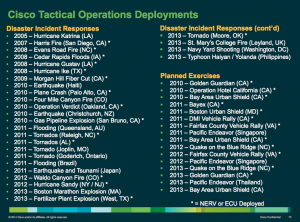|
|
|
Tuesday, July 30th, 2019

Yesterday we took another look at the effects of, and how to deal with, jerks in the workplace. Today’s guest post by Ariel Schur addresses a different problem, i.e., colleagues who don’t pull their weight.
Most of us have dealt with a lazy colleague at some point in our professional career. They do the bare minimum, but just enough to fly under the radar. Coworkers like these unfortunately have the capability of single-handedly undermining group work or projects with looming deadlines. Yet, somehow, they have managed to remain employed – and some even manage to get ahead! Are employees simply supposed to grin and bear it? What can we do when we’re saddled with a lazy coworker?
There are effective ways to combat this issue at work and potentially change that colleague’s behavior moving forward.
Speak to your colleague directly
Approach your colleague with your concerns, relate their performance back to how it affects you. For example, “I’ve been taking on a lot of your work assignments lately and it’s preventing me from getting my own work done”, or “I had to re-do your part of the project because it didn’t follow the requirements”. Making them realize how their shortcomings are affecting the performance of yourself or the group is the first step if you want their behavior to change. From there, talk about ways to hold each other accountable and hold up each end of the bargain for future collaborations.
It is usually best to first try approaching your colleague with your concerns before going to your manager. Not only is this proper workplace etiquette, but why take the problem to someone else if you may be able to solve it on your own?
Document all correspondence
Any e-mail, conversation transcription, group notes, etc. will be helpful. Keeping a paper trail of all written (or verbal) communication is important for two reasons; 1) so you can remind your colleague of all the times you talked to them regarding the issue, and 2) you’ll have examples to bring up to your boss or manager, in the event that you do have to talk to them about the situation. If it does need to be reported, I suggest going directly to whoever is overseeing the project or would hold you responsible if the work is not completed.
Keep a Positive Attitude to Avoid Adopting Their Work Ethic
It’s easy to let a coworker’s laziness affect your attitude at work. You may even feel tempted to think “well, if they’re not going to do it, neither am I” – but that’s a bad idea. Your reputation is directly correlated to your performance and that is not worth risking. If you talked to your colleague and/or supervisor and do not see a change, do not let it influence the work you’ve put in. Always remain professional and continue to be the conscientious worker you are!
Dealing with lazy colleagues is never easy. Talking to them about the issue is often times enough for things to improve, but in some instances you may be required to take extra steps. Try to work with them, keep track of all the problems that arise as a result of their slack, and do not let it affect your own performance. Taking these steps to combat the issue are sure to make your life at your job easier moving forward.
Ariel Schur, LCSW is the CEO and sole founder of ABS Staffing Solutions. Her high-touch, service-oriented approach has been a refreshing change to the industry. Ariel prides herself on developing highly customized relationships with clients so that they can find the right employee matches for any and all employment needs. Ariel has set a new standard for the “boutique” approach to staffing. Her work model is time-intensive, specifically tailored to her clients’ specific needs, and all-encompassing to provide the highest quality experience.
Posted in Communication, Motivation, Personal Growth | No Comments »
Thursday, June 15th, 2017

I had the opportunity to spend some time in Raleigh, NC this week in the Research Triangle. If you haven’t had an opportunity to spend some time here, I highly recommend it. Not only is the area full of beauty, it’s a melting pot of diversity that exemplifies the best of America. The hub of elite universities and top ranked tech companies make this a desirable place to raise a family, but also pursue a career with meaning.
I was here to spend some time with BMC software and was able to sit in and watch first hand on how they train their inside sales teams. I was thinking about how I wanted to approach this topic and this forum allowed for me to point out some real world examples of how a cultural revolution can be started.
A little background on BMC. They are one of the largest private software companies in the world and create products for enterprise IT systems to do everything from track assets, create help desk tickets, manage capacity and sit on top of complex environments to manage jobs.
In a real world example Starbucks is a customer and if BMC’s software failed at any time then Starbucks would be unable to accept any form of plastic.
I say all of this to say they are in big spaces doing the behind the scenes work that is required for us to live this modern life. They were acquired by Bain Capital a few years ago and have been in a massive growth trajectory lately.
One major change that Bain made was the expansion of inside sales teams, BDR’s and inside sales reps.
When you think of sales you think of someone wining and dining with customers and comping their dinners; these guys don’t live that life. They manage the sales cycles through phone, email and LinkedIn.
It is a special skill that is required and it can be taught. These teams add great value to the organization by sourcing leads, closing business and creating value for the customers and field representatives.
An entry level role is as a BDR, Business Development Representative. My experience at other companies has been that these are young college grads that are hungry.
You have some of that at BMC, but they also have folks that have years of experience in other industries who are starting out in software.
You also have some that just enjoy that role and have done it for years. BMC takes these folks from all different backgrounds and shapes them to its vision and culture.
How do they do this?
One way they do it is by constant feedback and coaching opportunities. Now, this can be done the wrong way, but they seem to balance it well here where people seek out opportunities to learn and improve.
They also spend time highlighting team members who are doing something unique that works for them. They take folks that are young in their career and allow them to teach others. This does wonders for morale and also inspires others.
The last thing that I saw that helps is that they like to have fun as a team. They have happy hours, Vegas trips, president’s clubs. Constant incentives to allow people to reach their full potential.
I was impressed with the way they won as a team and built on mutual successes. They were not afraid to share best practices and they helped each other out as much as possible.
Now, maybe we can’t all go to Vegas but some of the things they are doing are very scaleable, not rocket science, and can be repeated at any org.
And then start the revolution.
Image credit: BMC
Posted in Culture, Ryan's Journal | No Comments »
Wednesday, June 8th, 2016
KG’s schedule has gotten so bad that he sends no-words-needed images in lieu of written posts.
Either way he really nails the subject, as with today’s offering.

It’s not the first time we’ve addressed that issue; in 2010 I posted about what happens when that ‘I’ rears it’s ugly head.
Posted in Culture, Leadership, Personal Growth | No Comments »
Monday, October 26th, 2015

Stars. Everyone wants to hire stars.
Sports teams buy them for astronomical salaries.
Companies use salaries, stock, sign-on bonuses and anything else they can.
Beyond bragging rights, stars are supposed to goose innovation, boost productivity and all kinds of good stuff.
But do they?
In 2010 the Miami Heat bought LeBron James and Chris Bosh to add to the triple the star power of Dwayne Wade — and had a terrible season.
What happened?
Stars want to be stars.
When individual interests take precedence over what is best for the collective, group performance declines. It no longer functions as a cohesive whole. (…) For chickens [another example], businessmen, and basketball players alike, high-levels of performance comes with high-levels of competitive spirit. These status conflicts drive performance down.
Down, not up.
You can still hire brilliant individual contributors if you are willing to put in the time and effort to make them a team.
It takes work, because they won’t become one left to their own devices.
Just remember that all teams aren’t created equal, so be sure your team plays basketball and not baseball.
Bill Simmons referred to baseball as “an individual sport masquerading as a team sport.”
President Barack Obama referred to basketball as “the quintessential team sport”
Flickr image credit: Kentucky National Guard
Posted in Hiring, Motivation, Retention | 1 Comment »
Wednesday, May 13th, 2015

It’s impressive when a market set to double from roughly $4+ billion to $8+ billion by 2019 doesn’t really solve the problem it claims to solve.
Huh?
The market is collaboration software and, based on new research, it only works for half the problem.
Unfortunately, it turns out that inducing more collaboration may hinder the most important part of problem-solving: actually solving the problem. While connecting employees does increase the ability to gather facts during the early stages of tackling a problem, it also inhibits the ability to analyze those facts and find a solution.
The 21st Century approach that’s been pushed by academics and the collaboration industry has been supported only by research done separately on the two halves.
Solving any problem requires two distinct steps,
- Collecting data
- Analyzing and using the data.
The first responds well to collaboration; a variety of people with different experiences and world-views are less likely to homogenize their information-gathering.
… the most-clustered groups gathered 5 percent more information than the least-clustered groups…
However, the gain didn’t carry over to a solution.
Clustering also seemed to inhibit the breadth and number of answers that the players proposed. The least-connected networks came up with 17.5 percent more theories and solutions than did the most-connected networks.
17.5% is a significant number — especially when it’s your organization.
Collaboration is a marvelous tool, but it’s not a silver bullet.
As with most good tools it needs to be used where and when it works.
Flickr image credit: Ron Mader
Posted in Change, Culture, Motivation | No Comments »
Monday, September 8th, 2014

What makes a great boss?
What traits do they have in common?
Obviously, great bosses are
- excellent communicators
- good at hiring,
- superb motivators,
- world-class team-builders, and
- caring mentors
Beyond those basics, with almost no exceptions, all are egalitarians.
That basic MAP trait permeates their actions and is apparent in their communications.
Great bosses, no matter the level of interaction, speak and act with the same respect, interest, appreciation, and consideration that they would want in similar circumstances.
Flickr image credit: Celestine Chua
Posted in Communication, Personal Growth | No Comments »
Tuesday, June 17th, 2014

You can learn a lot from the Chrysler turnaround and here’s one of the most important points.
Fixing the product isn’t enough.
Developing recruiting and retention of knowledge workers isn’t enough.
Fixing basic problems that affect lower-level workers is imperative.
It took five years, starting in 2009 and when Fiat CEO Sergio Marchionne finally owned Chrysler (free registration required) the situation in the manufacturing areas was worse than expected.
Marchionne is a smart guy; he knew that no matter how many billions were spent on design and other high-level needs Chrysler wouldn’t turn around without the full support of the blue-collar workforce.
Marchionne said the company also made sure to spend money on the parts of the plant that touched employees more personally — bathrooms, lunchrooms, parking lots and reception areas. Why?
“The state of disrepair, of neglect of the work environment that these people were offered to make a high-quality product that was supposed to compete internationally with the best of the best, right?” You can’t do that when you can’t walk into the bathroom at one of the plants because they’re just not presentable.” Along with retooling and good leadership decisions, he said, the success of Chrysler “was due to the unwavering commitment of a group of people who make up the blue-collar force of Chrysler.”
A lot of people believe that union employees don’t care. Therefore, because it’s hard to get rid of them it doesn’t matter how you treat them.
And it’s not just in unionized areas.
Wall Street is famous for treating its pink-collar and back room employees, including IT, poorly.
Tech companies do everything for so-called stars, while treating the rest as replaceable ciphers.
The bottom line is that bosses who treat any part of their team as replaceable is, at best, short-sighted and, at worst, plain stupid.
Flickr image credit: Monikah Wiseman
Posted in Culture, Motivation | No Comments »
Monday, March 3rd, 2014

CEO John Chambers has been successfully reinventing Cisco Systems for 19 years, but his best innovation has a very low profile. In fact, this is the first time I’ve heard/read about it in the nine years it’s been around.
The unsung innovation is called TacOps and it’s actually a team of heroes.
TacOps is a combination of people and equipment that bring emergency communications to areas devastated by both natural and manmade disasters.
Cisco has a special team called Tactical Operations that swoops in after natural disasters to get Internet and telephone service back up, so that rescue workers can do their jobs.
TacOps first response was in 2005 for Hurricane Katrina and its most recent to Typhoon Haiyan.
The cost of both equipment and manpower is totally funded by Cisco.
Nor does the team wait until things settle down; rather they are there with the first responders in a crisis when working communications are so critical to saving lives.
And while these deployments may showcase its equipment in a positive way you can be sure that’s not the driving factor.
If it was, we all would have heard a lot more about it over the last nine years.
So hats off to Cisco; it sure would be nice if more companies emulated its efforts in their own way.
Image credit: Cisco TacOps
Posted in Culture, Innovation | 1 Comment »
Monday, June 3rd, 2013
 In these days of social media too many people put more time and effort into building their brand and raising their Klout score than they do raising their kids or supporting their team. In these days of social media too many people put more time and effort into building their brand and raising their Klout score than they do raising their kids or supporting their team.
Many personal brands rest on nothing than the person’s ability to manipulate social media (especially true about Klout).
But what really fuels my dislike is the arrogance and ego in which the same folks like to indulge, saying if it’s good enough for Larry Ellison, Donald Trump, LeBron James or Alec Baldwin it’s good enough for them.
There are many ways in which to build your brand, but no matter how you do it the result should reflect your values.
It also helps to have a role model who reflects similar values, so if your goal is to be admired, appreciated and just plain liked you may want to consider David Beckham.
Beckham was not merely an athlete; he was an international brand that smartly fused a handsomeness that bordered on beauty with athleticism, marketing savvy and an eager embrace of the role of pop idol.
Beckham just announced his retirement from MLS, but that’s unlikely to diminish his brand.
Unlike many athletes, Beckham’s brand isn’t tied to his sport, nor did he set out to build it. He had a dream of playing soccer and played his best for every team he was on, no holds barred.
And unlike many stars, Beckham never acted like, and probably didn’t think, that he did it alone.
The difference is that instead of buying into the frenzy surrounding his looks, talent and skill he stayed a nice guy; one that everybody liked.
Stefan Szymanski, British co-author of the book Soccernomics and a professor of sports management at the University of Michigan, says, “Beckham is like that [the Queen Mother]. He never puts his foot wrong. He’s nice to everyone. You could never fault him for not giving his all. He doesn’t have enemies. It’s hard to dislike him unless you’re deliberately perverse.”
Beckham is proof that you can pursue your dreams and win big without being, or turning into, a jerk.
Flickr image credit: tpower1978
Posted in Personal Growth | No Comments »
Thursday, April 12th, 2012
Branson says, “Do well by doing good.”
Gandhi said, “Be the change you want to see in the world.”
The women of Water Valley, Mississippi have embraced both attitudes.
But why limit your entrepreneurial energy to just a business when you can save a town at the same time?
What does it take to change the world or at least your little corner of it?
Desire and belief.
A passionate desire to push the change and a deep belief that you can make it happen.
What isn’t required is a no-holds-barred, do-anything-to-make-it-happen desire that rejects  input from others and stomps on their ideas. input from others and stomps on their ideas.
Because no matter how brilliant you are; no matter how amazing your vision; no matter how deep your belief and passionate your desire…
You can’t do it alone.
SUBMIT YOUR STORY
Be the Thursday feature – Entrepreneurs: [your company name]
Share the story of your startup!
Send it along with your contact information.
I’ll be in touch.
Questions? Email or call me at 360.335.8054 Pacific time.
Sxc.hu image credit: merlin1075
Posted in Entrepreneurs | No Comments »
|
 Subscribe to
Subscribe to
MAPping Company Success
About Miki 
Clarify your exec summary, website, etc.
Have a quick question or just want to chat? Feel free to write or call me at 360.335.8054
The 12 Ingredients of a Fillable Req
CheatSheet for InterviewERS
CheatSheet for InterviewEEs™
Give your mind a rest. Here are 4 quick ways to get rid of kinks, break a logjam or juice your creativity!
Creative mousing
Bubblewrap!
Animal innovation
Brain teaser
The latest disaster is here at home; donate to the East Coast recovery efforts now!
Text REDCROSS to 90999 to make a $10 donation or call 00.733.2767. $10 really really does make a difference and you'll never miss it.
And always donate what you can whenever you can
The following accept cash and in-kind donations: Doctors Without Borders, UNICEF, Red Cross, World Food Program, Save the Children
*/
?>About Miki
About KG
Clarify your exec summary, website, marketing collateral, etc.
Have a question or just want to chat @ no cost? Feel free to write
Download useful assistance now.
Entrepreneurs face difficulties that are hard for most people to imagine, let alone understand. You can find anonymous help and connections that do understand at 7 cups of tea.
Crises never end.
$10 really does make a difference and you’ll never miss it,
while $10 a month has exponential power.
Always donate what you can whenever you can.
The following accept cash and in-kind donations:
|












 In these days of social media too many people put more time and effort into building their brand and raising their Klout score than they do raising their kids or supporting their team.
In these days of social media too many people put more time and effort into building their brand and raising their Klout score than they do raising their kids or supporting their team. input from others and stomps on their ideas.
input from others and stomps on their ideas.
